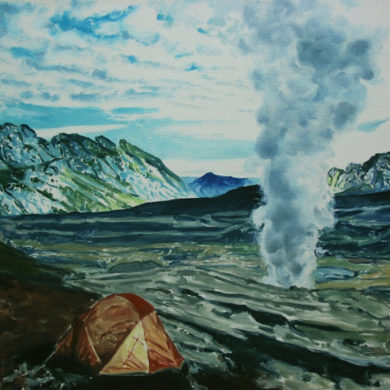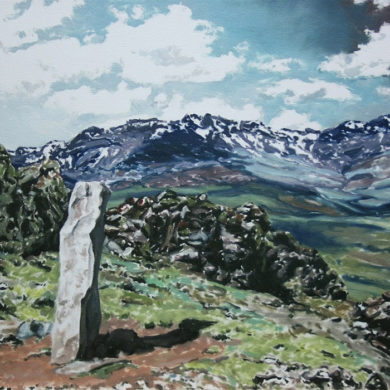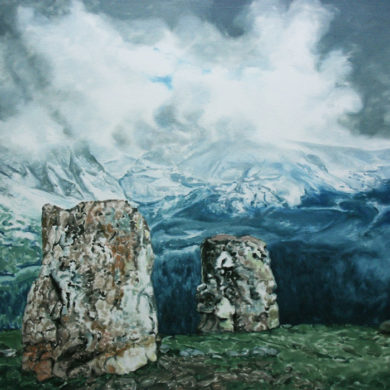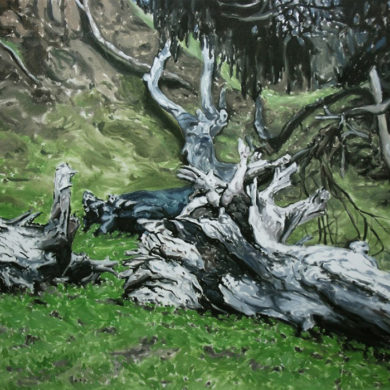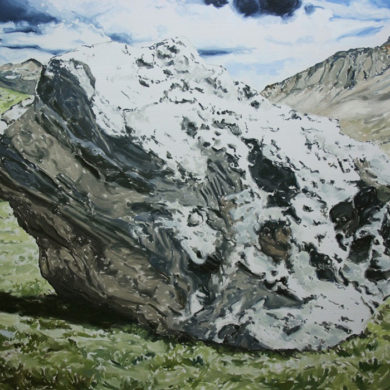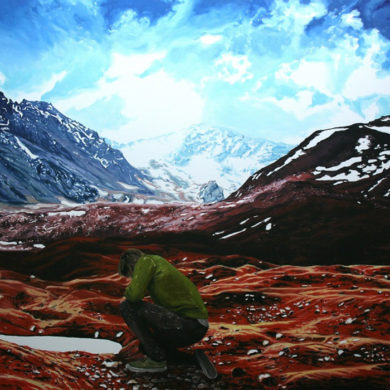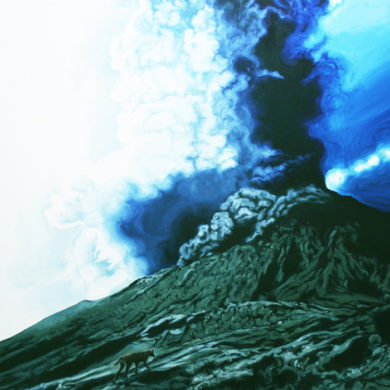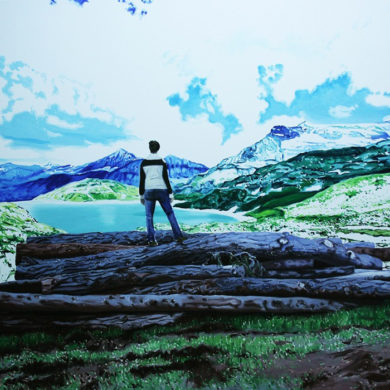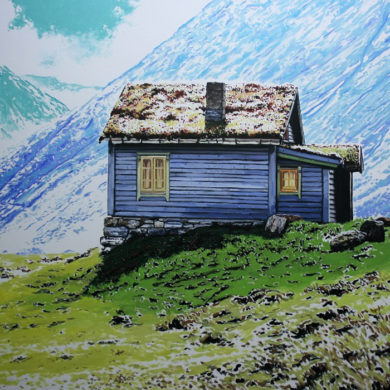Irene’s landscapes -visually vibrant and blinding- can be contemplated as a banned and inaccessible territory. Landscapes which are autonomous and protagonist but which, at the same time, are marked -for good or for bad- by the ravages of man. Horizons that give us a bucolic but threatening feeling, that “double Arcadia” that Erwin Panofsky talked about. However, a desire for reconciliation also prevails, an attempt at self-assurance in the face of a vast and unattainable infinitude.
A mountain, a dry tree trunk, or a partially cloudy sky must be able to reflect artistically speaking -subjectively- states of consciousness. It is an experience of the boundary that postulates a vast spiritual itinerary beyond an objective representation.
In addition, it is truly fascinating to see the versatility, the inconsistency by which these landscapes shift from being vacuous picturesque curiosities to becoming a pure emotion of the sublime –Ruskin used to call the Alps “cathedrals of the earth”-.
Just as Irene herself declares when discussing her work:
“From the picturesque taste of the sentimental traveller of the ‘Grand Tour’ to the recent transformation of landscape to an object of aesthetic consumption, the aesthetic appraisal of landscape arises from an intentional showing of the yearned-for natural object as an ideal space for the imagination. Or for action.”
The narrative nature of her work makes us spectators come face to face with open-ended stories where we can contemplate ourselves from a “vantage” and intentionally revealing point.
Curated by Juan Curto
In order to receive the press kit (press release and images) please contact us on (+34) 91 429 17 34 or e-mail info@camaraoscura.net

